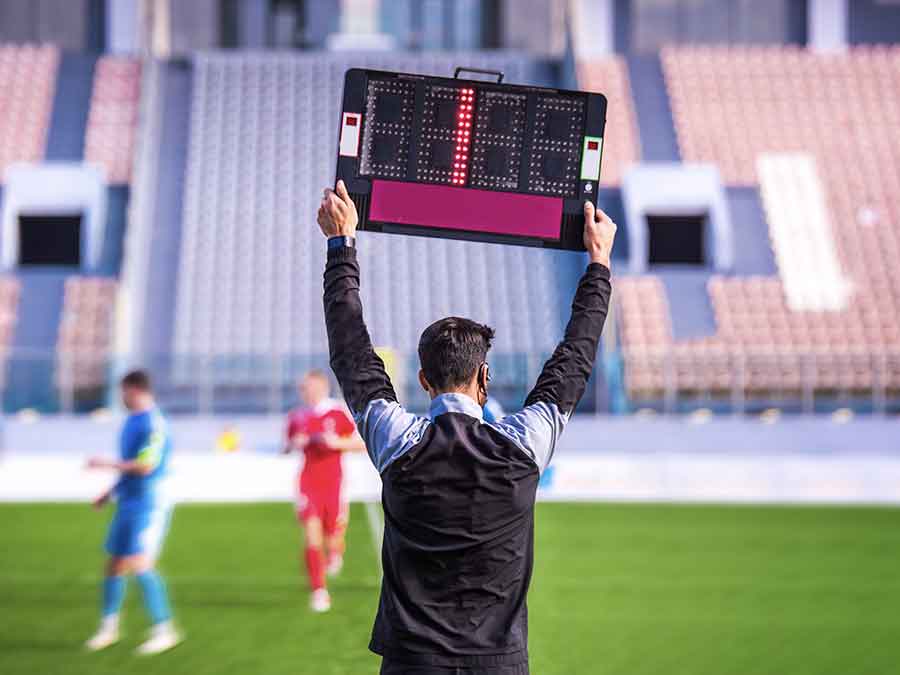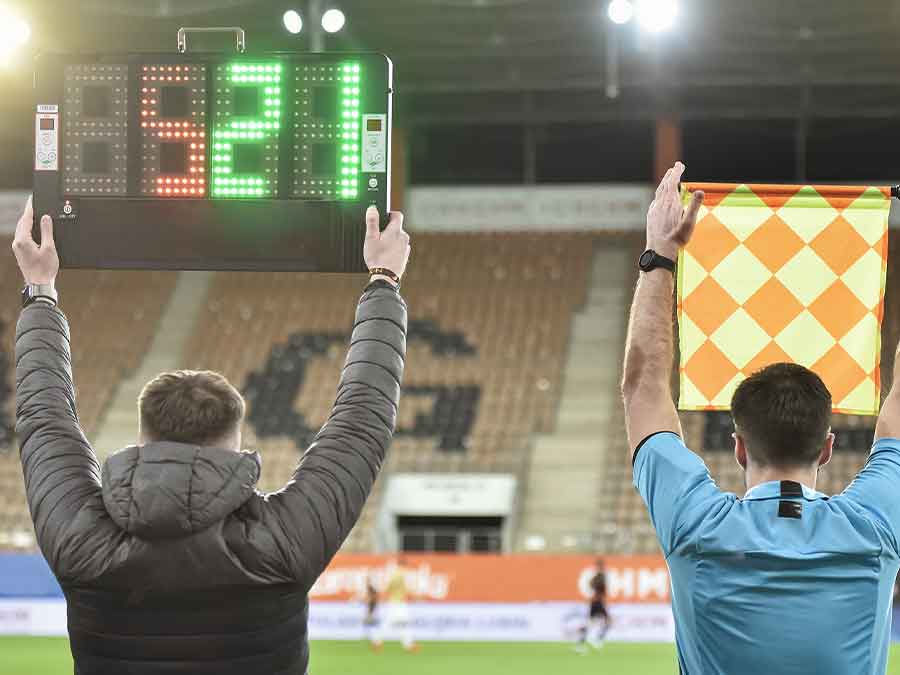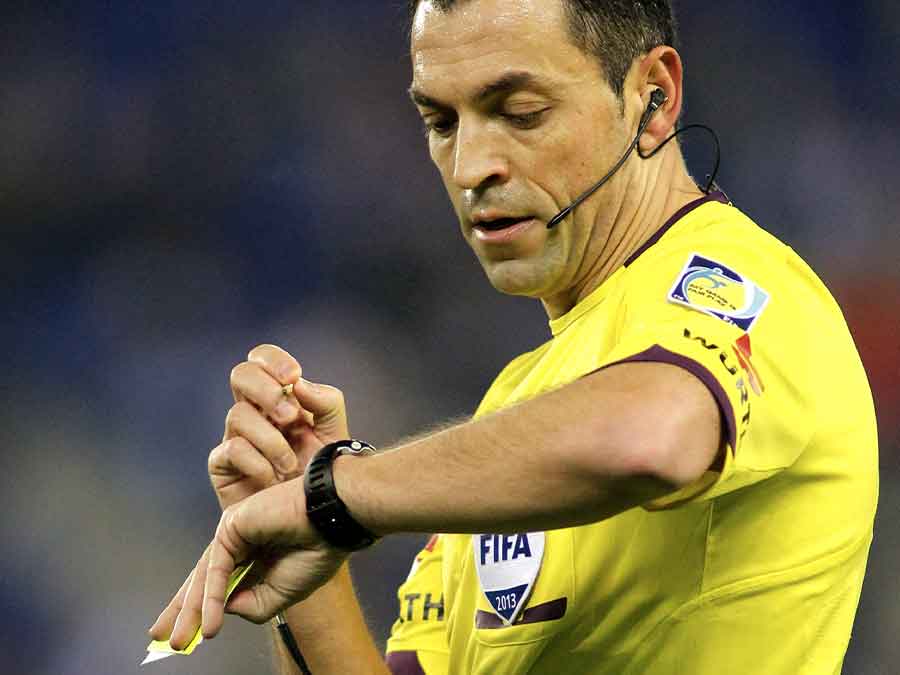Stoppage time
Stoppage Time in Soccer Explained
Soccer, also known as football, is the most popular sport in the world. It is a game of strategy, skill, and athleticism, and it is played by millions of people worldwide. But while many other popular sports have fixed time for matches to be played, that is not the case in soccer.
Unlike sports like basketball or handball, the timer never stops once the match begins, which means there are plenty of situations when nothing is really happening on the soccer field, but the time keeps ticking.
That is why the lawmakers of this sport introduced stoppage time. In this article, we will explore the various aspects of stoppage time in soccer, including its history, how it works, how it is calculated, and its accuracy.

What Are Other Names For Stoppage Time?
Soccer is the most popular sport in the world and English terms dominate its language. But even then, there are interesting situations where certain terms have synonyms. That is the case with stoppage time.
Before we go into what stoppage time really is, how it works and what purpose it serves, it is important to note that there are other names used to explain the same thing:
- Stoppage time
- Injury time
- Added time
These terms are all interchangeable and have the same meaning. They refer to the additional time that is added at the end of the two halves of a soccer game, to account for any time lost due to injuries, substitutions or other stoppages of play. Hence the words “stoppage” and “injury” being used in these cases.
When Was Stoppage Time Introduced?
Stoppage time was introduced in the early 20th century to ensure that games would have a fair and equal amount of playing time. Before the introduction of stoppage time, soccer games would simply end when the 90 minutes of regulation time had elapsed, regardless of any stoppages that may have occurred. This often resulted in games being unfairly decided due to time wasted on injuries or other interruptions.
How Does Stoppage Time Work?
Stoppage time is added to a soccer game at the end of each half. The referee determines the amount of stoppage time to be added based on the amount of time lost due to various factors.
These factors include player injuries, substitutions, or other stoppages in play. The time is added to the end of each half, and the game is not officially over until the stoppage time has been played.

During stoppage time, players are allowed to continue playing until the referee signals the end of the game. This means that a goal scored during stoppage time counts towards the final score of the game as any other goal scored during the match. Stoppage time can also be extended if there are additional stoppages in play during the added time. This is why fans can never really know when the match is going to end.
Some matches get stoppage time as long as 10 or more minutes, especially when a player suffers a serious injury, such as head injury. It is especially in those situations that it is tough to predict how long the stoppage time will be, as only the referee knows how he will calculate the amount of time needed to recover in added time.
How Is Stoppage Time Calculated?
Simply put, there are no precise maths that will determine how stoppage time is calculated. It is calculated by the referee just before the end of each half of the game. The referee will add up the amount of time lost due to injuries, substitutions, or other stoppages in play, and then add this time to the end of the half. The amount of stoppage time can vary from game to game, and it is ultimately up to the discretion of the referee.

This is why stoppage times can vary from match to match – not only due to what happened on the pitch, but also the way certain referees calculate the stoppage time.
Is Stoppage Time In Soccer Accurate?
Stoppage time in soccer is not always accurate, as it is ultimately up to the discretion of the referee. Some referees may be more lenient with their stoppage time calculations, while others may be more strict. Also, a factor on the length of the stoppage time can be the current scoreline.
Sometimes, when a certain team has a huge lead of four or five goals and it is clear the losing team cannot get a draw or win the match, referees decide to add a minimal amount of stoppage time or even scrap it altogether. Additionally, there is no way to account for time wasted during stoppages in play that are not immediately obvious to the referee.
Despite these limitations, stoppage time is considered to be a fair and necessary aspect of soccer. It ensures that games have a fair and equal amount of playing time, and it allows for additional time to be added to account for any time lost due to injuries or other stoppages in play.
In recent months, football authorities considered making stoppage times longer, which is what they instructed referees at the 2022 FIFA World Cup to do. At this tournament, stoppage times in all of the matches were unusually long. This was FIFA’s attempt to more precisely make up for the lost time, after many researches discovered the 90-minute soccer matches actually have around 60 minutes of active play.
Difference Between Stoppage Time and Extra-Time
Stoppage time and extra-time are two important concepts in soccer, but they refer to different things. Stoppage time, also known as added time, refers to the time that is added on to the end of each half of a soccer match to make up for time lost due to injuries, substitutions, and other stoppages in play. Extra-time, on the other hand, refers to additional time that is played at the end of a match if the game is tied after regulation time.
While stoppage time is typically added at the end of each half of a soccer match by the referee, extra-time is played if the game is tied after regulation time. Extra-time usually consists of two 15-minute periods, although this can vary depending on the competition or tournament rules, especially in youth soccer. If the game is still tied after extra-time, then a penalty shootout may be used to determine the winner.
The purpose of extra-time is to give both teams a fair chance to win the game without having to resort to a penalty shootout. It also adds an extra-level of drama and excitement to the game, as both teams will be pushing for a goal to win the game. Interestingly, stoppage time can be added at the end of both extra-time halves, as well.
Conclusion
Stoppage time, also known as injury time or added time, represents the time the referee signals that has to be added at the end of two halves of a soccer match. It is added based on the amount of time lost during the game, due to various stops in play. Stoppage time is not entirely precise, but it does help get back some lost time and it can give time to teams to create incredible comebacks and score late goals. While not many like the tension stoppage time can bring, it certainly makes soccer even more fun and unpredictable.
